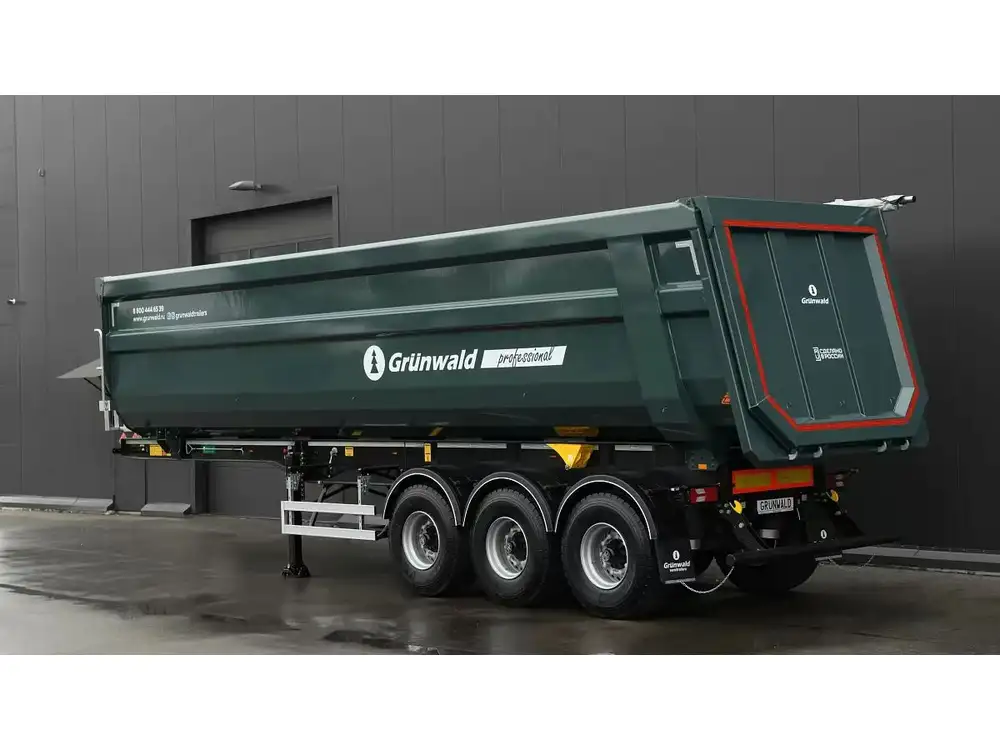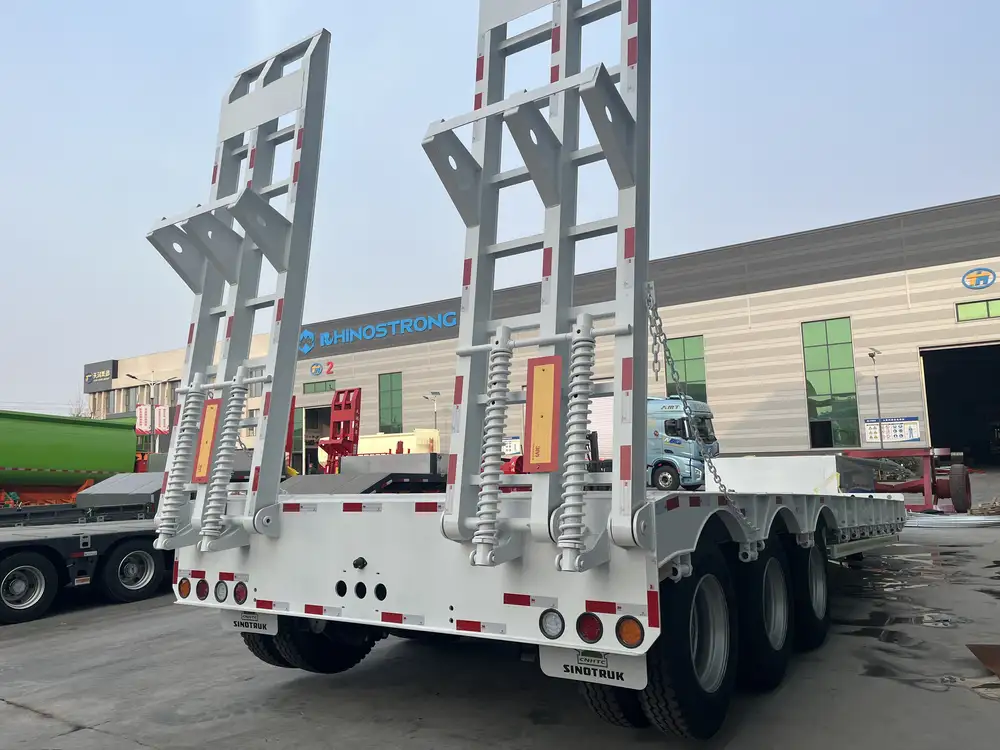Introduction
In the realm of semi-trailer manufacturing, the choice of suspension is pivotal not only for vehicle performance but also for safety, load capacity, and overall ride quality. Among the various types of suspension systems available, the semi-trailing arm rear suspension stands out as a sophisticated and efficient design. This article delves into the complexities, applications, and benefits of semi-trailing arm rear suspension systems, providing a comprehensive insight into why they are favored in the transport industry.
What is Semi-Trailing Arm Rear Suspension?

Design Overview
The semi-trailing arm rear suspension is a configuration typically employed in heavy-duty vehicles. This suspension system consists of two primary components: the trailing arms that connect the rear axles to the chassis, and the shock absorbers that help manage ride dynamics. The design features arms that pivot at an angle, allowing for effective vertical movement while providing lateral stability during operation.
| Component | Purpose |
|---|---|
| Trailing Arms | Connect the axle to the chassis, allowing pivoting |
| Shock Absorbers | Dampen the effects of road irregularities |
| Springs | Support the weight of the vehicle and absorb shocks |
Functionality
The semi-trailing arm suspension operates by allowing the rear axle to move both vertically and laterally. This unique motion enhances the contact tire characteristics with the road surface, leading to improved traction and stability, especially under load. Additionally, this system aids in distributing the weight evenly across the axle, reducing wear on tires and prolonging their lifespan.
Key Benefits of Semi-Trailing Arm Rear Suspension

Enhanced Stability
One of the primary advantages of semi-trailing arm rear suspension is the increased stability it offers. By allowing the rear wheels to maintain consistent contact with the road surface, this suspension minimizes body roll, especially during turns and heavy braking. Such stability is crucial for freight transportation where varied loads are common.
Improved Load Distribution
The design of this suspension system permits better weight distribution. This versatility ensures that loads are balanced across the trailer, reducing stress on any one point of the axle. Consistent load distribution is essential not only for the longevity of the trailer but also for safe towing capabilities.
Optimal Shock Absorption
With its inherent design, the semi-trailing arm rear suspension provides exceptional shock absorption. When traveling over uneven terrains, the suspension minimizes the impact felt in the cab, translating to a smoother ride and less fatigue for drivers. This capability is especially important for long-haul trips where comfort translates into efficiency.

Versatility in Applications
Semi-trailing arm rear suspensions are not limited to a particular type of trailer. They can be utilized effectively in various setups, including:
- Flatbed Trailers: Favorable for transporting building materials or large machinery where stability is paramount.
- Enclosed Trailers: Beneficial for cargo requiring added protection, such as sensitive electronics or perishables.
- Refrigerated Trailers: Essential for maintaining temperature control while ensuring a smooth transport experience.
Comparison with Other Suspension Types
Understanding the unique advantages of semi-trailing arm rear suspension requires a comparison with other common suspension designs.
| Suspension Type | Stability | Load Capacity | Comfort | Cost |
|---|---|---|---|---|
| Semi-Trailing Arm | High | High | High | Moderate |
| Leaf Spring | Moderate | Moderate | Low | Low |
| Air Suspension | Very High | Very High | Very High | High |
| Rigid Axle Suspension | Low | Moderate | Moderate | Moderate |
The table illustrates that while air suspension might offer superior comfort and stability, semi-trailing arm rear suspension serves as an excellent compromise between cost-efficiency and performance—particularly for those who do not require the complexity of air-based systems.
Maintenance Considerations

Routine Checks
Regular maintenance of the semi-trailing arm rear suspension is crucial to ensure its efficient operation. Key areas to inspect include:
- Bushings and Joints: Check for wear and tear, as these components help in absorbing shocks.
- Shock Absorbers: Ensure they are functioning correctly; ineffective shock absorbers can lead to reduced ride quality.
- Alignment: Regular alignment checks can prevent uneven tire wear and enhance overall handling.
Incorporating these routine maintenance practices can save manufacturers and operators alike from costly repairs in the future.
Common Issues and Solutions
Like any mechanical system, the semi-trailing arm rear suspension may face challenges. Here’s a concise list of common issues and how to mitigate them:
| Issue | Symptoms | Solution |
|---|---|---|
| Excessive wear on bushings | Increased noise, vibrations | Replace bushings regularly |
| Oil leaks from shock absorbers | Visible oil on shock housing | Inspect seals; replace shock if necessary |
| Improper wheel alignment | Uneven tire wear, pulling to one side | Perform alignment checks regularly |
The Future of Semi-Trailing Arm Rear Suspension

Innovations on the Horizon
The demand for advanced suspension systems is ever-growing, particularly as payloads increase and regulations become stricter. Anticipated innovations may include:
- Smart Suspension Technology: Integration of sensors to monitor road conditions and adjust damping in real-time.
- Lightweight Materials: Utilizing advanced composite materials could enhance the suspension’s efficiency without compromising strength.
- Enhanced Energy Absorption: Developments in shock absorber technology may yield products that provide even greater ride quality and impact resistance.
Conclusion
The semi-trailing arm rear suspension is an exemplary choice for semi-trailer manufacturers focused on optimizing safety, stability, comfort, and load capacity. By providing superior ride quality and facilitating reliable load handling, this suspension design has cemented its place as a staple in the industry. Investing in or utilizing semi-trailing arm rear suspension systems can not only improve operational efficiency but also enhance the overall driver experience. As technology continues to evolve, these suspensions will likely become more sophisticated, addressing the future challenges of the transport sector with grace and innovation.



